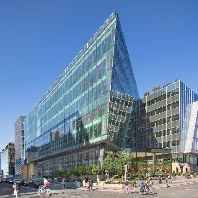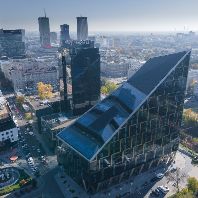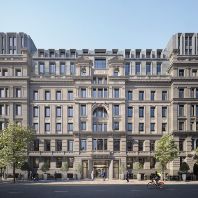Law firms and non-traditional office sectors, such as medical, education, and life sciences could be poised to lead the recovery in the central London office market this year as they look to take advantage of the current disruption to secure more favourable lease terms, according to the latest research from property consultancy Gerald Eve.
The legal sector accounted for 14% of total take-up last year, much higher than the average 6% in a typical year over 2011-2015. This proportional jump is almost identical to 2008 when London was in the teeth of the global financial crisis. As was the case then, a growing availability rate will put downward pressure on rents, giving law firms an opportunity to reduce their long-term occupational costs.
In the years following the financial crisis, the mix of London occupier sectors changed. In this new phase for London, the relaxation of use class regulation means new mixtures of use classes and the shift to re-fit and reposition buildings to offer alternative office environments, could provide occupational demand from the non-traditional sectors. Landlords will seek to diversify their occupier base and secure occupiers who are set to have a sustained increase in activity in response to the pandemic.
London’s development pipeline has over 7.5 million ft² of unlet office space due to complete in the next two years, with ‘grey space’ availability – occupiers looking to sublet parts of their estate – standing at three million sq ft at the end of 2020 and anticipated to increase at a slower rate. Total availability in central London is currently running at more than 7% and on an upward trajectory.
Patrick Ryan, partner at Gerald Eve, said: “The legal sector has always been a vital pillar of London’s office occupier market, with property requirements that are less impacted by changing working patterns because of the need for collaboration and client engagement. The strength of their covenant and their ability to take a longer view puts them in a powerful position in leasing negotiations, and those firms that have leases expiring in the next couple of years will undoubtedly seek to take advantage of the current market and lock-in the favourable rental terms. If 2020 was a shock on the scale of the 2008 financial crisis, the response from law firms today is mirroring their actions then.”
Rhodri Phillips, partner at Gerald Eve, added: “The development pipeline and rise of ‘grey space’ will push the availability rate higher in the coming year even as leasing activity returns. However, the pandemic has changed what companies will demand from their central London offices, and there will be a flight to quality as corporate occupiers target the newest space with the best facilities and hygiene protocols. As offices now serve a different need, they will require more collaboration and innovation space, and it is the new developments that are best-placed to offer these features.”
But despite the pandemic-driven trends that are impacting take-up, London’s prime office market is still viewed positively by investors, especially overseas capital, which accounted for 87% of investment activity in the final quarter of last year. Total investment in 2020 was €9.7bn (£8.3bn), heavily skewed towards Q4, and this is expected to rise in 2021 as postponed sales come to market and pent-up demand targets the sector.
Lloyd Davies, partner at Gerald Eve, said: “For all the changes COVID-19 has driven in the London office market, there remains cause for long-term optimism for the sector, and this is reflected in the ongoing demand from overseas investors, albeit hampered by current travel restrictions. As with the occupier market, it is prime assets that are commanding the most attention, and this flight to quality – new, well-let, grade A space – that will continue to be the focus for investors. As ever with London, there are geopolitical as well as macroeconomic factors at play, and the dominance of Far Eastern investors – with €1.9bn (£1.6bn) of inflows – in part reflects the current situation in Hong Kong. What is clear, however, is that London remains attractive to overseas investors, especially those from locations such as Hong Kong and Germany where London office yields are currently 1.5%-2% higher than in their domestic markets.”















